Abstract
We report on two studies that assessed the impact of a soap-opera style videotape on inner-city STD (sexually transmitted disease) patients' knowledge about and attitudes toward condom use, and willingness to redeem coupons for free condoms. Subjects in the first study who viewed the videotape (and participated in a brief oral recall session) had higher knowledge scores and more accepting attitudes than subjects who did not (knowledge test means of 11.1 versus 7.9, attitude index means of 13.0 versus 11.3). The intervention was most effective among those who were relatively poorly educated and, to a lesser extent, among those who reported less frequent use of condoms and fewer sex partners. In the second study, intervention group subjects were more likely than control group subjects to redeem coupons. Both groups exhibited a high level of interest in the free condoms. We argue that education and accessibility to free condoms can increase condom use and that health care providers have a vital role in promoting this form of STD prevention.
Full text
PDF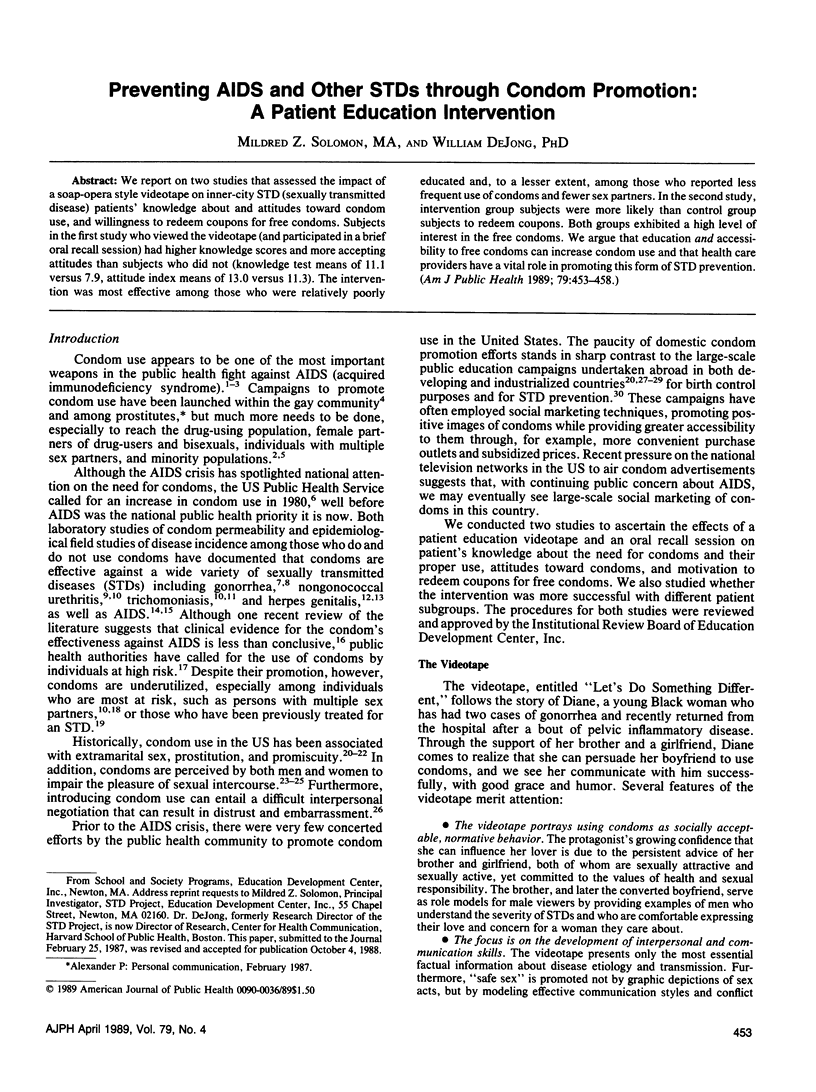
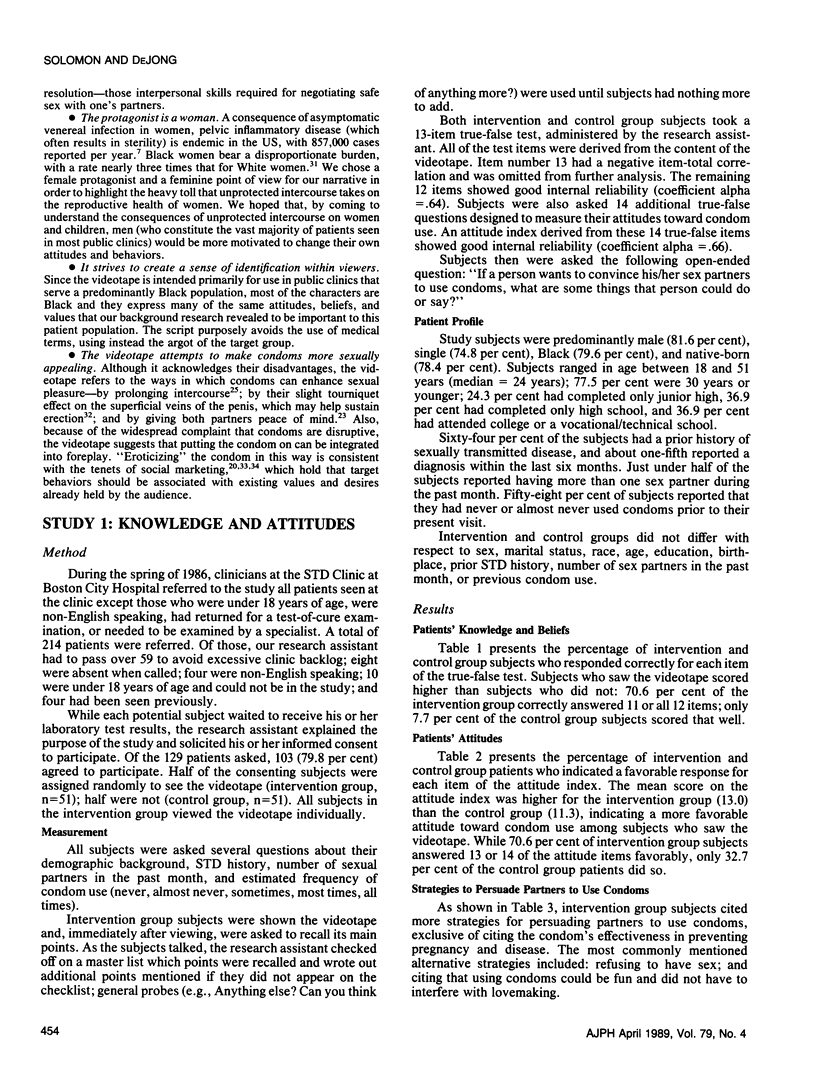
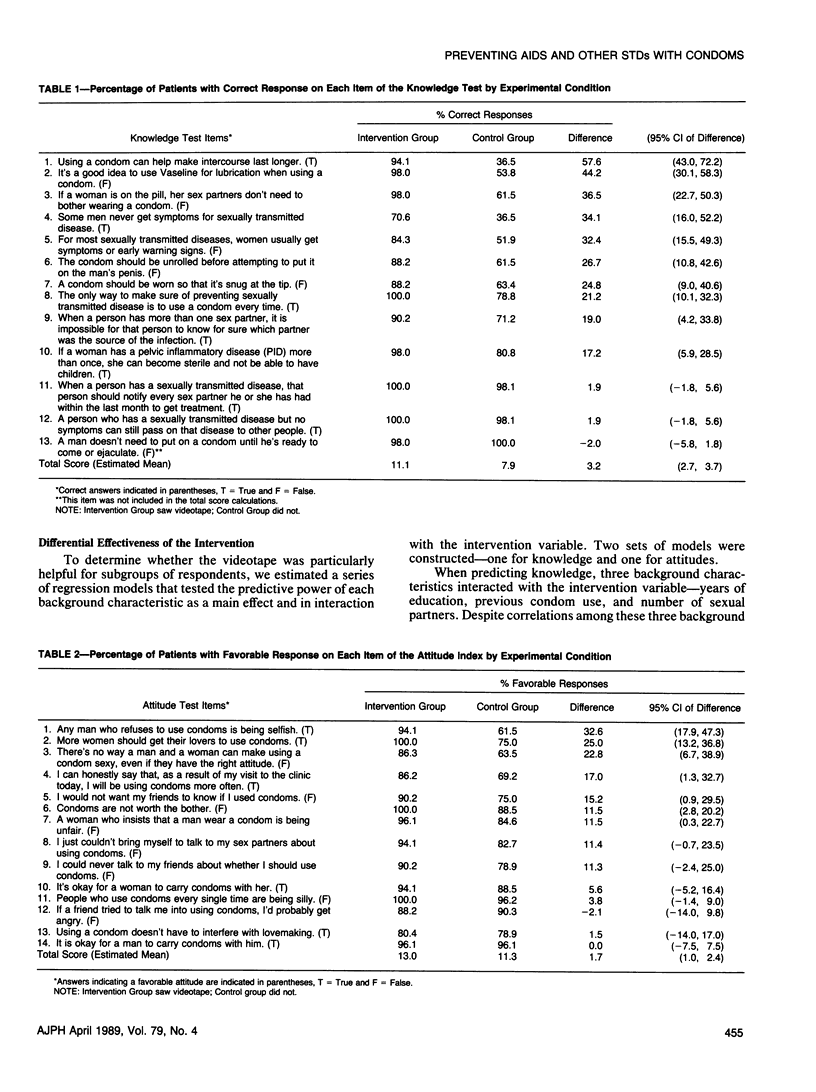
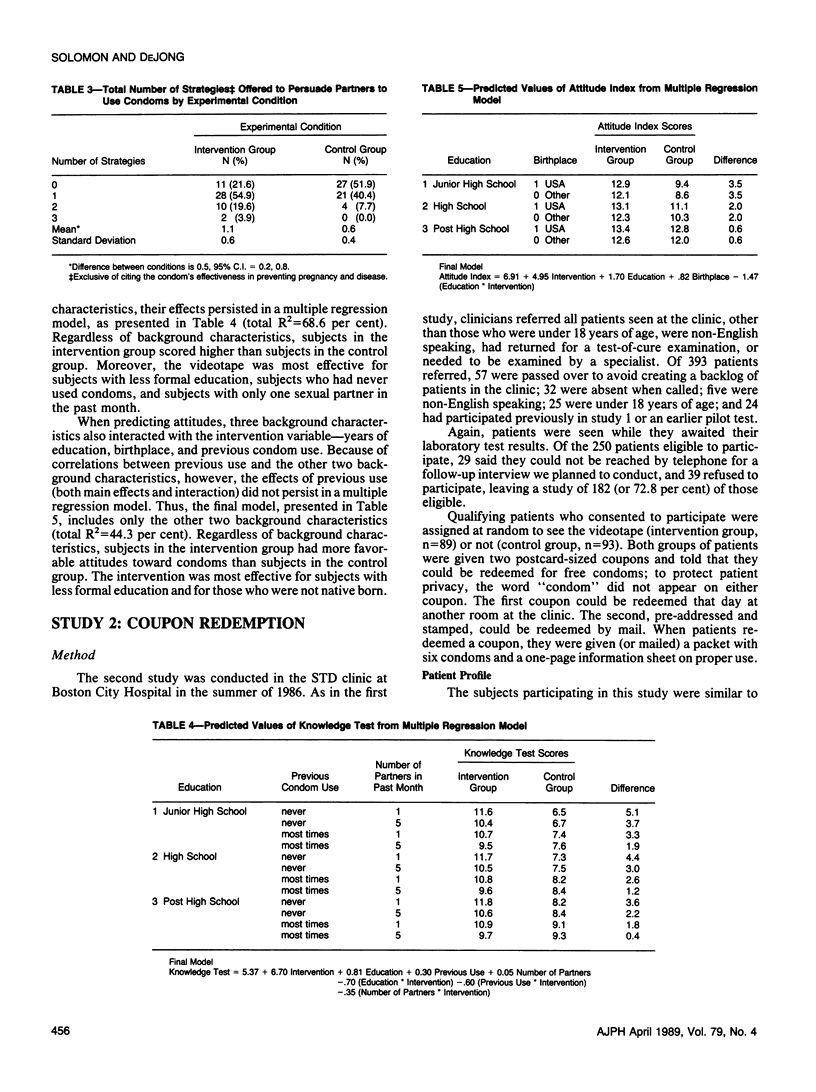
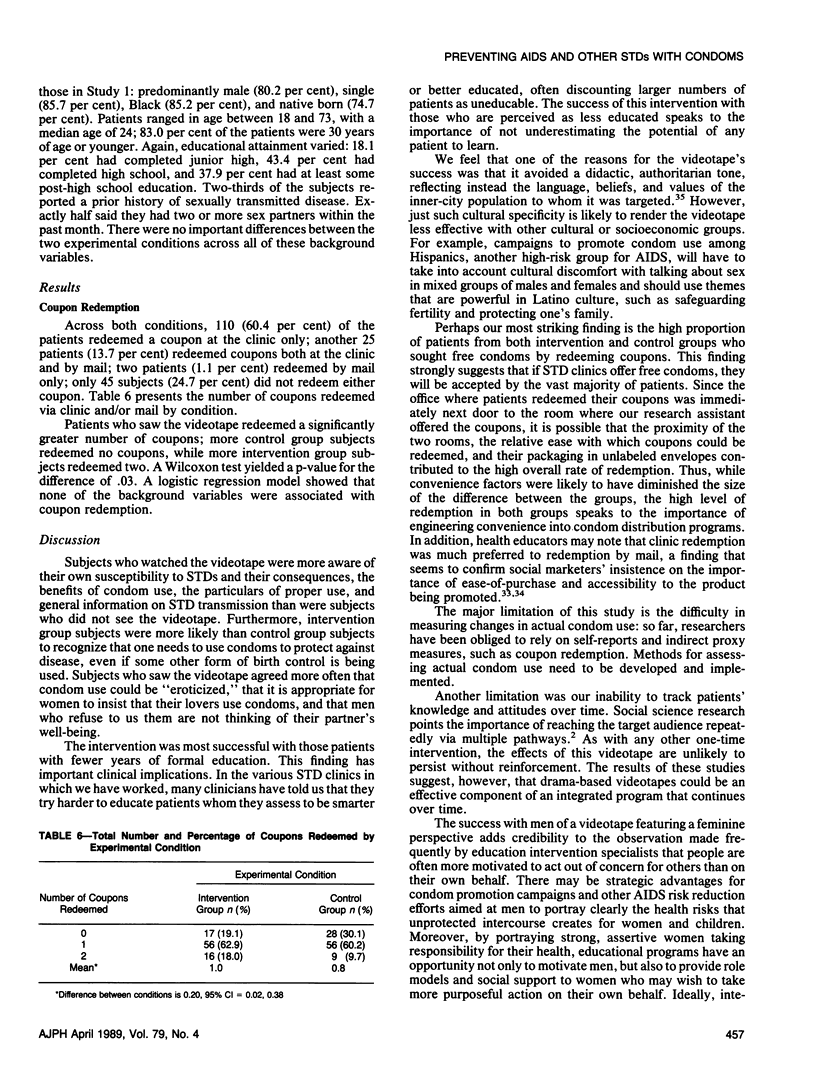
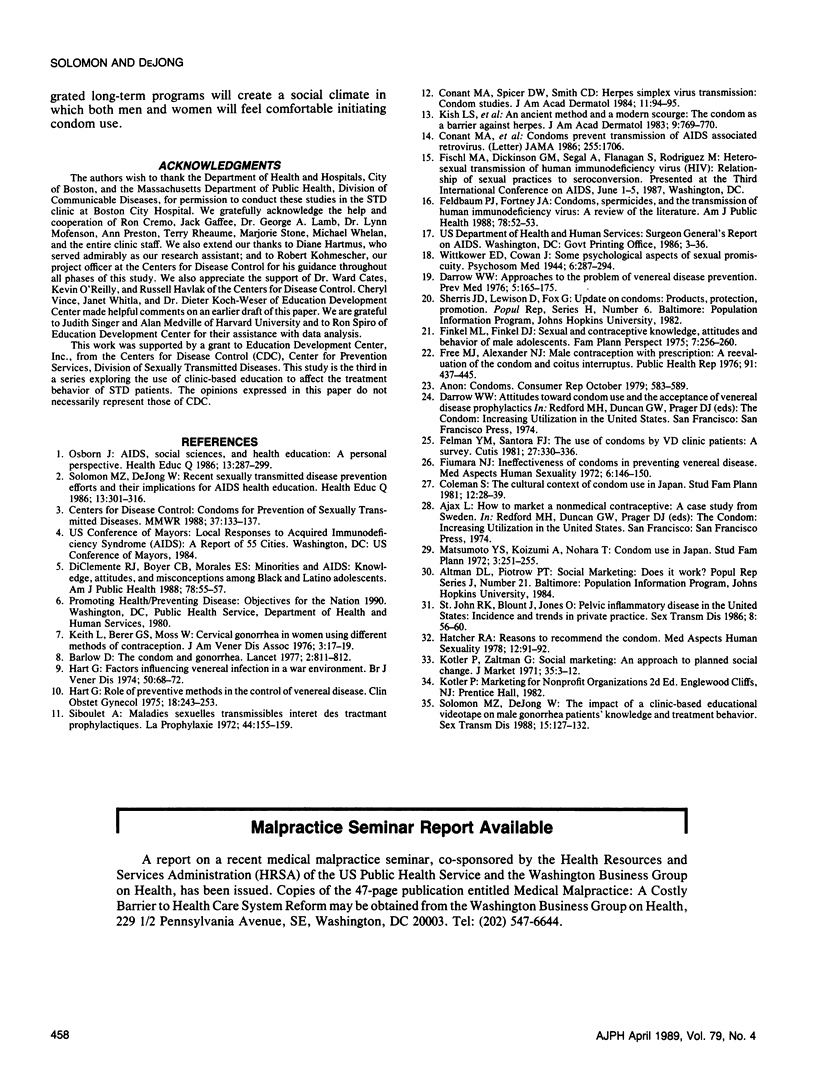
Selected References
These references are in PubMed. This may not be the complete list of references from this article.
- Barlow D. The condom and gonorrhoea. Lancet. 1977 Oct 15;2(8042):811–813. doi: 10.1016/s0140-6736(77)90737-1. [DOI] [PubMed] [Google Scholar]
- Coleman S. The cultural context of condom use in Japan. Stud Fam Plann. 1981 Jan;12(1):28–39. [PubMed] [Google Scholar]
- Conant M. A., Spicer D. W., Smith C. D. Herpes simplex virus transmission: condom studies. Sex Transm Dis. 1984 Apr-Jun;11(2):94–95. doi: 10.1097/00007435-198404000-00009. [DOI] [PubMed] [Google Scholar]
- Conant M., Hardy D., Sernatinger J., Spicer D., Levy J. A. Condoms prevent transmission of AIDS-associated retrovirus. JAMA. 1986 Apr 4;255(13):1706–1706. [PubMed] [Google Scholar]
- Darrow W. W. Approaches to the problem of venereal disease prevention. Prev Med. 1976 Mar;5(1):165–175. doi: 10.1016/0091-7435(76)90018-9. [DOI] [PubMed] [Google Scholar]
- DiClemente R. J., Boyer C. B., Morales E. S. Minorities and AIDS: knowledge, attitudes, and misconceptions among black and Latino adolescents. Am J Public Health. 1988 Jan;78(1):55–57. doi: 10.2105/ajph.78.1.55. [DOI] [PMC free article] [PubMed] [Google Scholar]
- Feldblum P. J., Fortney J. A. Condoms, spermicides, and the transmission of human immunodeficiency virus: a review of the literature. Am J Public Health. 1988 Jan;78(1):52–54. doi: 10.2105/ajph.78.1.52. [DOI] [PMC free article] [PubMed] [Google Scholar]
- Felman Y. M., Santora F. J. The use of condoms by VD clinic patients. A survey. Cutis. 1981 Mar;27(3):330–336. [PubMed] [Google Scholar]
- Finkel M. L., Finkel D. J. Sexual and contraceptive knowledge, attitudes and behavior of male adolescents. Fam Plann Perspect. 1975 Nov-Dec;7(6):256–260. [PubMed] [Google Scholar]
- Free M. J., Alexander N. J. Male contraception without prescription. A reevaluation of the condom and coitus interruptus. Public Health Rep. 1976 Sep-Oct;91(5):437–445. [PMC free article] [PubMed] [Google Scholar]
- Hart G. Factors influencing venereal infection in a war environment. Br J Vener Dis. 1974 Feb;50(1):68–72. doi: 10.1136/sti.50.1.68. [DOI] [PMC free article] [PubMed] [Google Scholar]
- Hart G. Role of preventive methods in the control of venereal disease. Clin Obstet Gynecol. 1975 Mar;18(1):243–253. doi: 10.1097/00003081-197503000-00021. [DOI] [PubMed] [Google Scholar]
- Keith L., Berer G. S., Moss W. Cervical gonorrhea in women using different methods of contraception. J Am Vener Dis Assoc. 1976 Sep;3(1):17–19. [PubMed] [Google Scholar]
- Kish L. S., McMahon J. T., Bergfeld W. F., Pelachyk J. M. An ancient method and a modern scourge: the condom as a barrier against herpes. J Am Acad Dermatol. 1983 Nov;9(5):769–770. doi: 10.1016/s0190-9622(83)80130-3. [DOI] [PubMed] [Google Scholar]
- Kotler P., Zaltman G. Social marketing: an approach to planned social change. J Mark. 1971 Jul;35(3):3–12. [PubMed] [Google Scholar]
- Osborn J. E. AIDS, social sciences, and health education: a personal perspective. Health Educ Q. 1986 Winter;13(4):287–299. doi: 10.1177/109019818601300402. [DOI] [PubMed] [Google Scholar]
- Solomon M. Z., DeJong W. Recent sexually transmitted disease prevention efforts and their implications for AIDS health education. Health Educ Q. 1986 Winter;13(4):301–316. doi: 10.1177/109019818601300403. [DOI] [PubMed] [Google Scholar]
- Solomon M. Z., DeJong W. The impact of a clinic-based educational videotape on knowledge and treatment behavior of men with gonorrhea. Sex Transm Dis. 1988 Jul-Sep;15(3):127–132. doi: 10.1097/00007435-198807000-00001. [DOI] [PubMed] [Google Scholar]


